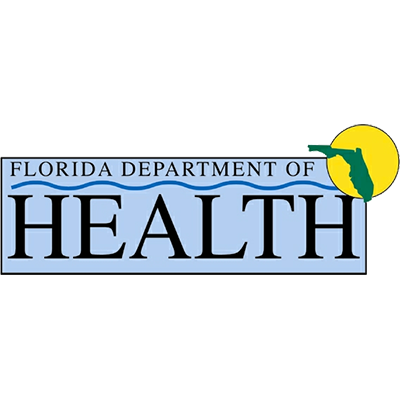Links to other resources: Detox Treatment, Alcohol Treatment in Florida
After the recent brazen attack on an insurance executive in New York last week, there has been an increase in scrutiny and interest around health insurance practices, including denial of claims, as the executive who was targeted works for a company with extremely high claim denial rates. (Over 30% while industry standard is under 20%). Today I wanted to take another look at how health insurance affects substance use disorder treatment, and share some information from a recent National Institutes of Health article on this topic. If you or a loved one found us because you need the best drug and alcohol rehab in Florida, call us today for more information on addiction treatment in Panama City Florida.
Addiction is a chronic and relapsing disease that profoundly impacts thoughts and behavior. Beyond the personal toll on individuals, addiction places a significant burden on healthcare systems and society. Primary care physicians regularly encounter patients with conditions associated with addiction, such as intoxication, withdrawal, and craving. They also manage related illnesses, including treatment-resistant hypertension, liver and pancreatic diseases, and injuries from risky behaviors. Specialists and tertiary care facilities frequently address preventable conditions like hepatitis C, fetal alcohol syndrome, and traumatic brain injuries, underscoring the far-reaching consequences of addiction. The best drug and alcohol rehabs in Florida, including residential and outpatient rehab facilities like Florida Springs in Panama City, use a proven model of evidence-based addiction treatment, but to reach more patients, more buy-in is needed from the health insurance industry to proper drug and alcohol rehab and care.
The Case for Comprehensive Treatment
Despite the challenges, addiction is treatable, with outcomes comparable to or better than treatments for other chronic diseases requiring lifestyle changes. Early diagnosis and intervention are critical for optimal outcomes, ideally before addiction causes irreversible cognitive damage or disrupts careers and family lives. Early and effective treatment can mitigate the extensive personal, social, and economic repercussions of addiction.
Comprehensive addiction treatment is also cost-effective. Studies demonstrate significant reductions in healthcare costs, emergency room visits, and crime rates following treatment. For instance, a California Alcohol and Drug Treatment Assessment study found that $209 million spent on treating approximately 150,000 substance users led to $1.5 billion in savings within the first year post-treatment. These savings, driven primarily by reductions in crime and improved health outcomes, equate to a $7 return for every dollar invested. This 7 dollar figure, shared by David Breithaupt of the California Society of Addiction Medicine Public Policy, has appeared on the blog before and is pretty stunning.
Barriers to Treatment Access
Despite its efficacy, access to addiction treatment remains limited, one of the most entrenched issues in drug and alcohol rehab Florida, and something we discuss routinely on this website. Full health insurance coverage for addiction treatment is rare, leaving only wealthier individuals able to afford some comprehensive care. This lack of coverage reflects a broader trend of declining support for psychiatric and behavioral health treatments. Between 1988 and 1998, employer-provided health benefits for substance abuse treatment decreased by 76%, exacerbating disparities in access to care, which persist today in a post-covid environment that is much worse, with many more overdose deaths each year.
The financial consequences of this coverage gap are staggering. U.S. medical expenditures related to addiction are estimated at well over a trillion dollars. Expanding access to treatment nationally could significantly reduce these costs, benefiting taxpayers and the healthcare system. For example, the Rand Corporation found that providing unlimited substance abuse benefits in employer-sponsored health plans would cost employers only $5.11 per plan member annually. This modest cost pales in comparison to the broader societal benefits of reducing addiction-related illnesses and crimes, and death.
Legislative Progress in California
California has taken significant steps to address addiction through legislative action. In 2000, voters approved Proposition 36, the Substance Abuse and Crime Prevention Act. This initiative diverts individuals with addictions from the criminal justice system into community-based treatment programs. This has become common place in Florida as well. Drug courts often refer individuals to the best drug and alcohol rehab in Florida, Florida Springs in Panama City. In the case of California, the Legislative Analyst’s Office estimated that Proposition 36 has saved the state $100 million to $150 million annually. While promising, the initiative’s success depends on expanding public and private treatment services to meet increased demand.
Additionally, California State Senator Wes Chesbro introduced Senate Bill 599, a drug treatment parity bill requiring health insurance plans to cover addiction treatment. This legislation aims to eliminate discrimination in health insurance benefits, ensuring lifetime treatment access for all insured individuals. Support for this bill has come from various medical and public health organizations, reflecting growing recognition of addiction as a public health issue rather than a moral failing.
Overcoming Resistance to Parity Legislation
Despite its benefits, parity legislation faces resistance from insurers who argue that expanded coverage is unaffordable. However, studies consistently show that the long-term savings from reduced healthcare utilization and improved public health outweigh the initial costs. For example, in the CALDATA study, emergency room admissions decreased by one-third following treatment, illustrating the potential for substantial healthcare cost reductions.
According to the NIH article, support for addiction treatment parity has come from unexpected quarters, including Barry MacCaffrey, a former commanding general of the U.S. “War on Drugs.” When asked about his biggest regret in addressing drug abuse, MacCaffrey highlighted the failure to secure insurance coverage for addiction and mental health treatment. His statement underscores the pressing need for systemic change to ensure that all individuals struggling with addiction can access the care they need.
A Path Forward
To address the addiction crisis, insurers must embrace a comprehensive approach to treatment. This includes early diagnosis, integrated care for co-occurring medical and psychiatric conditions, and equitable access to treatment through insurance coverage. Policymakers, healthcare providers, and insurers must work together to shift the narrative around addiction from stigma to empathy and support. The best drug and alcohol treatment centers offer both outpatient care and 30-day inpatient residential treatment for drugs and alcohol. Insurance coverage should reflect this, as we need to end the practice of insurers only covering partial stays, often 15 days or less of the recommended 30. Investing in addiction treatment is not just a moral imperative but also an economic necessity.
By Tim Cannon
Sources:
NIH and Western Journal of Medicine, “Why health insurers should pay for addiction treatment”
Analysis by California Legislative Analyst’s Office with Department of Finance. Available at: www.drugreform.org.



